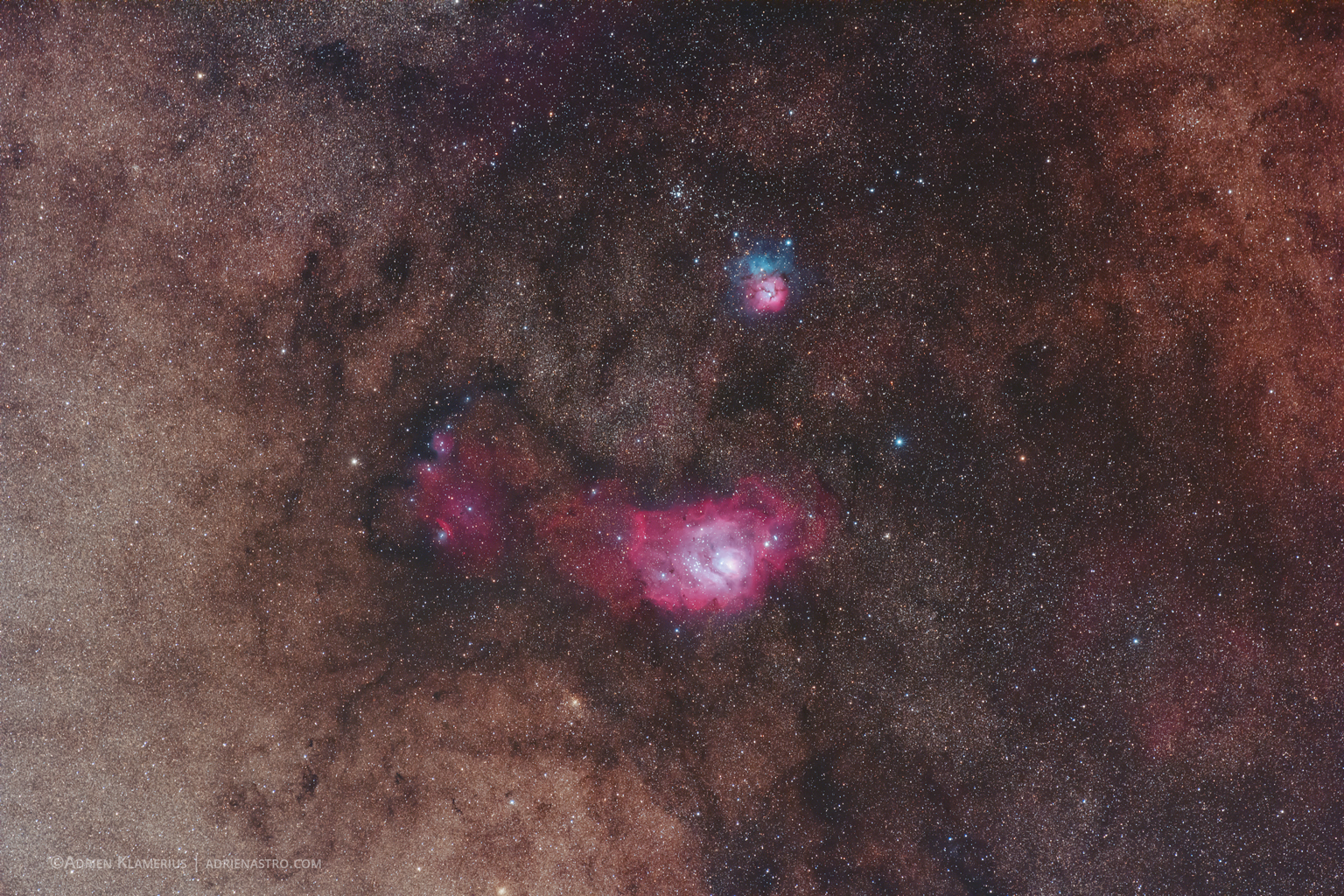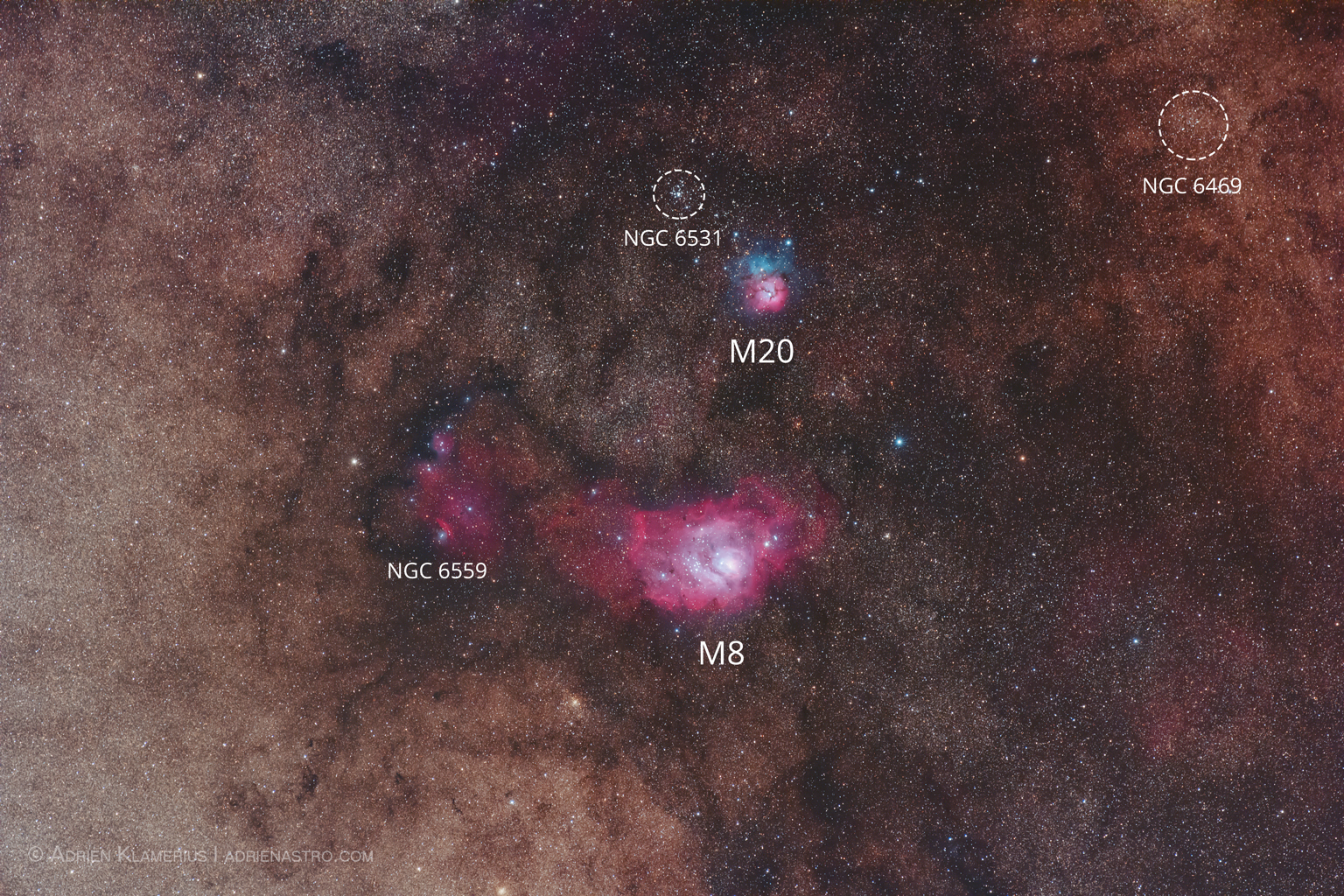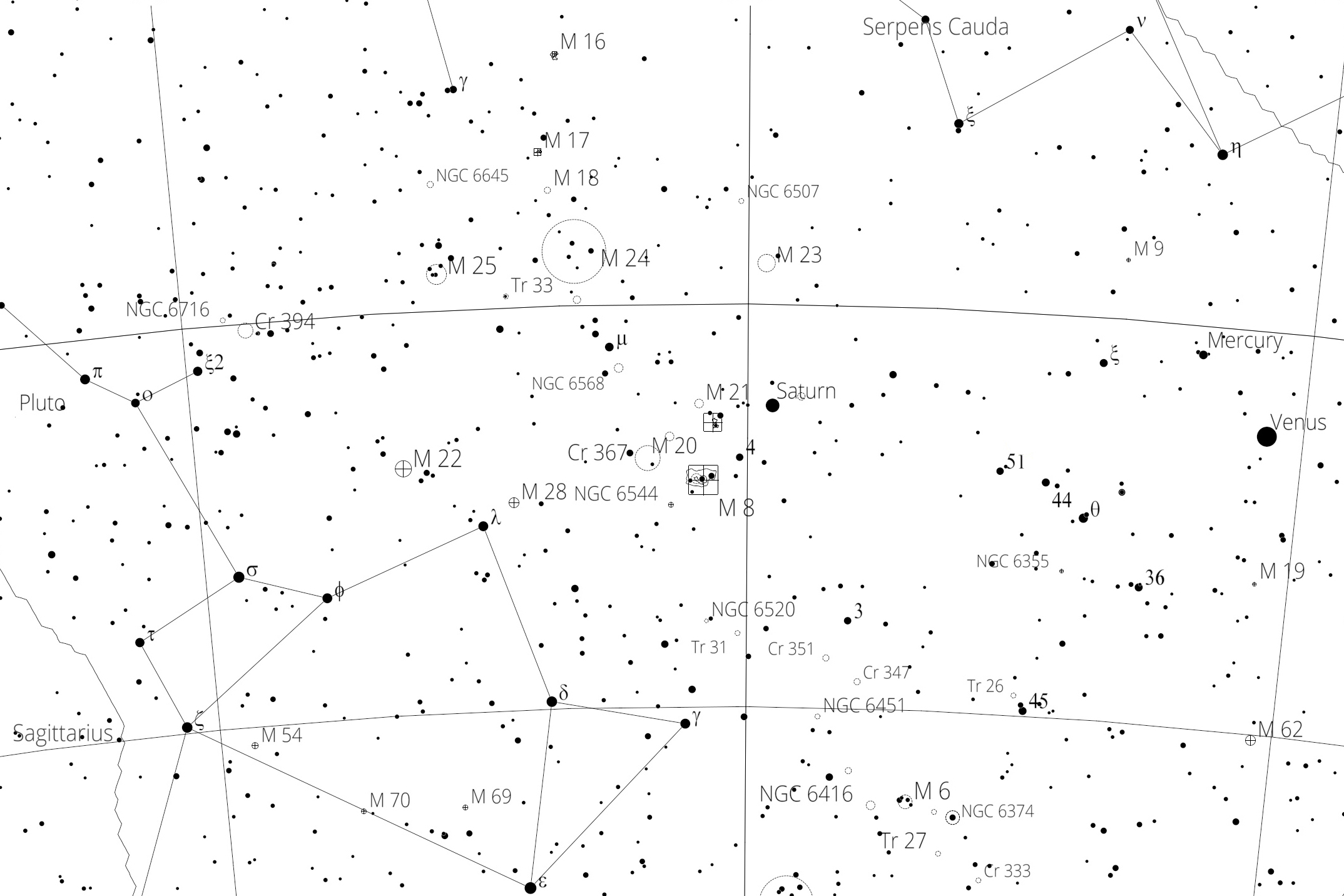The Lagoon (M8) and the Trifid Nebula (M20) are a pair of bright emission nebulas in the constellation Sagittarius. Both can be seen with the naked eye from dark sites. This image shows these two nebulas against the background of the dense star fields of the Sagittarius Arm of the Galaxy.
The Lagoon Nebula (M8) is an H II region or interstellar cloud that glows red due to ionized hydrogen as it recombines with lost electrons. The Lagoon Nebula is estimated to be between 4,000-6,000 light-years from Earth and it spans a region 110 by 50 light years in size. The Lagoon is an active stellar nursery and contains a number of Bok globules which are collapsing dark protostellar clouds, consisting of interstellar material.
The Lagoon Nebula was first spotted by Italian astronomer Giovanni Hodierna in 1654, later in 1764 Messier added it to his catalogue as the eighth object.
The Trifid Nebula (M20) is a young and compact nebula. Dark dust lanes in the nebula appear to split the nebula into three parts. The object is an unusual combination of an open cluster of stars, emission nebula, reflection nebula and a dark nebula.
The bright emission nebula glows red in the characteristic color of ionized hydrogen while the reflection nebula is blue from nearby hot, young stars. The Trifid Nebula name means 'divided into three lobes'. The distance of the nebula is estimated about 5000 light years, and has a diameter of about 25 light years.
Trifid Nebula was discovered by Charles Messier in 1764, and added to his catalogue as the twentieth object.
INSTRUMENT Canon EF 70-200mm F/2.8 II
CAMERA Canon EOS 60Da
MOUNT Vixen Sphinx
GUIDING Lacerta MGen Autoguider
EXPOSURE TIME 12x5min iso 800
LOCATION Drage, Croatia
DATE 2017.07.16.





